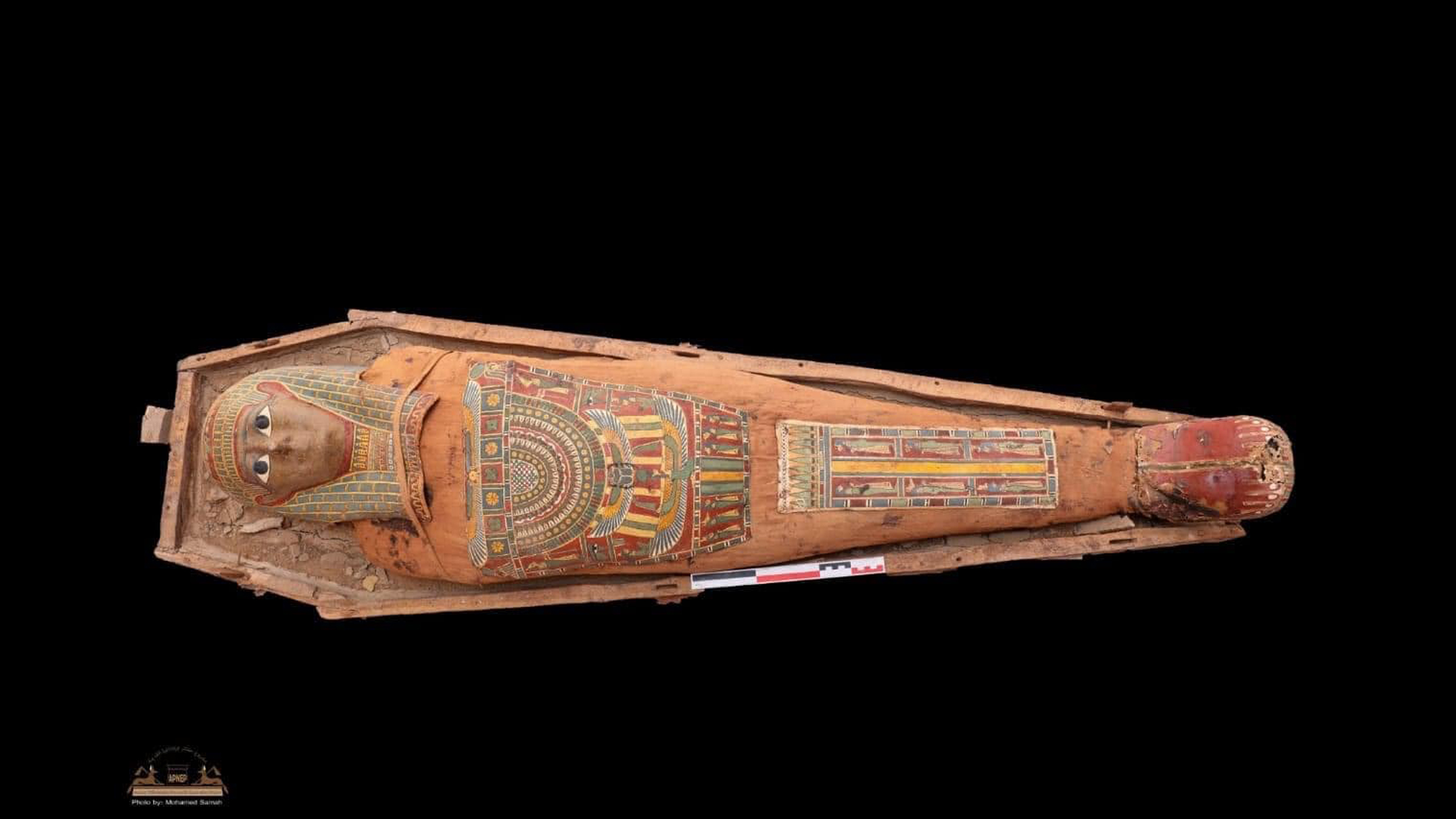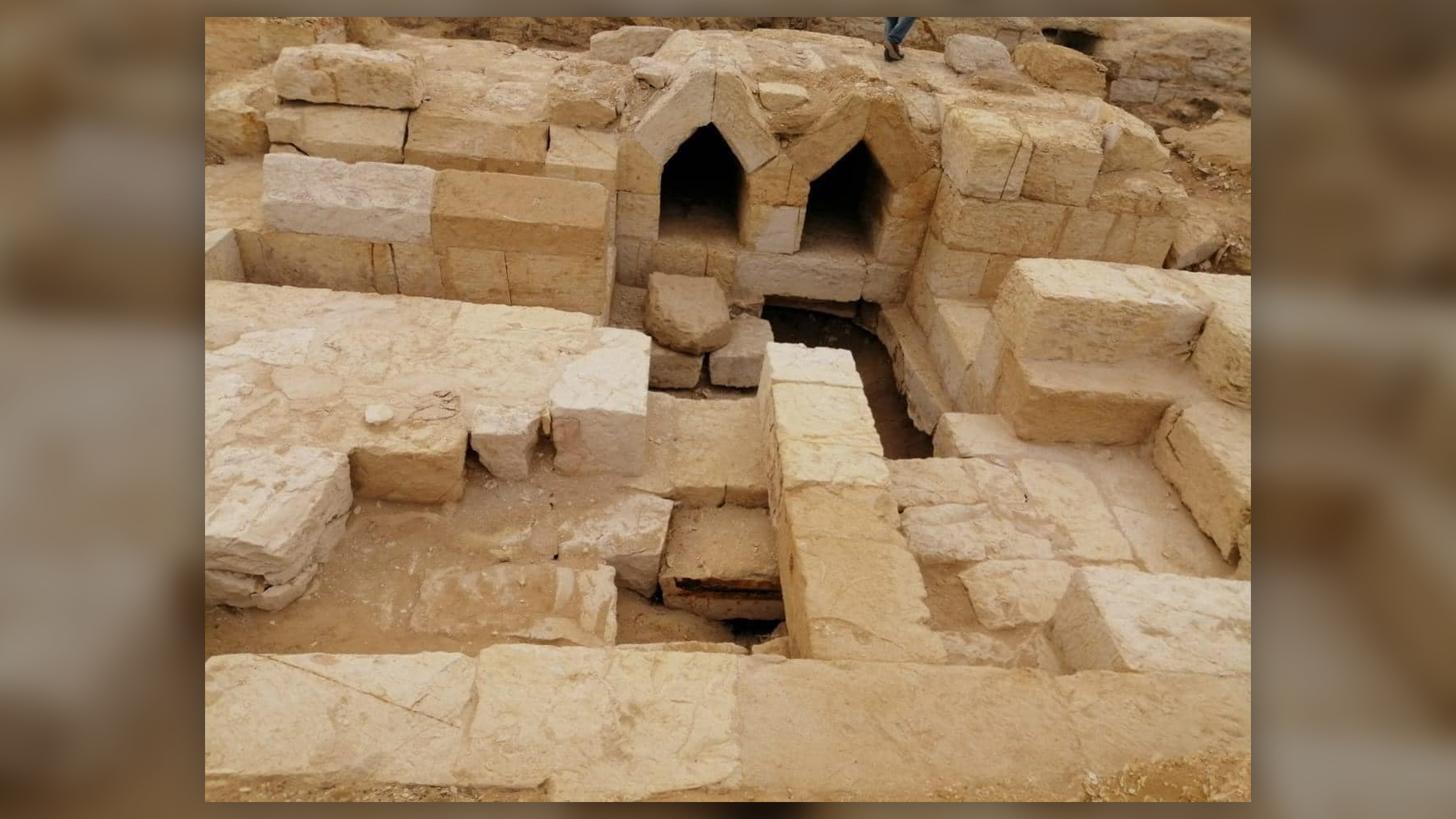Ancient mummy portraits and rare Isis-Aphrodite idol discovered in Egypt
For the first time in 50 years, archaeologists have discovered Fayum mummy portraits at an ancient Egyptian site.

Archaeologists have discovered ancient mummies buried with stunning, lifelike portraits of the deceased. The mummies were interred in a cemetery at the ancient city of Philadelphia in Egypt, the Egyptian Ministry of Tourism and Antiquities announced on Dec 1.
The city of Philadelphia, located about 75 miles (120 kilometers) southwest of Cairo in the Fayoum area of Egypt, was founded during the Ptolemaic period (304 B.C. to 30 B.C.), when Egypt was ruled by a dynasty of pharaohs descended from one of Alexander the Great's generals. Philadelphia — Greek for the city of brotherly love — continued to flourish even after the dynasty fell and the Romans took control of Egypt.
During excavations at the ancient site's necropolis, archaeologists unearthed two complete mummy portraits, along with semi-complete and incomplete portraits, Basem Gehad, director of the ancient Philadelphia necropolis excavation mission, told Live Science in an email.
Related: Why does the Rosetta Stone have 3 kinds of writing?
The "people who were buried in such a context in Philadelphia are for sure upper-middle class or elite so that they could offer to their relatives [such] expensive portraits that are identical to the person," Gehad said. The portraits were painted by artists who were likely from Alexandria, an Egyptian city on the Mediterranean coast, Gehad said.
Mummy portraits
Archaeologists rarely find mummy portraits. Prior to the new discoveries, the last mummy portraits found in archaeological excavations were unearthed in the 1880s. Grave robbers looted ancient cemeteries, including Philadelphia's, for their mummy portraits during the 19th century. However, archaeologists did manage to analyze some of the Philadelphia graves.
"The cemetery was looted in the 1880s for Roman mummy portraits, most of which were sold to the Viennese dealer and collector Theodor Graf," Susan Walker, an honorary curator of the Ashmolean Museum at the University of Oxford, told Live Science in an email. "He catalogued and organised exhibitions of them world-wide, with the result that the portraits are now dispersed in museum and private collections, principally throughout America and Europe."
Get the world’s most fascinating discoveries delivered straight to your inbox.
Walker, who was not involved in the excavations, told Live Science that the new discoveries may shed more light on Egyptian mummy portraits, as the new finds were examined with modern scientific methods. "As a result of the new excavations, we shall certainly have a better understanding of the cemetery that the looted portraits came from," Walker said.
In addition to the mummy portraits, archaeologists found the remains of a building where mummies were buried and a statue that depicts Isis-Aphrodite, an Egyptian-Greek goddess associated with love. They also unearthed the remains of papyri containing demotic (an Egyptian cursive script) and Greek writings. The papyri contain information on the social, economic and religious conditions of the people who lived in the area, the ministry said in a statement.
Excavations at the cemetery and analysis of the finds are ongoing.

Owen Jarus is a regular contributor to Live Science who writes about archaeology and humans' past. He has also written for The Independent (UK), The Canadian Press (CP) and The Associated Press (AP), among others. Owen has a bachelor of arts degree from the University of Toronto and a journalism degree from Ryerson University.




